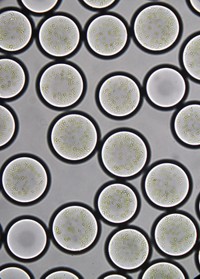Advertisement
Grab your lab coat. Let's get started
Welcome!
Welcome!
Create an account below to get 6 C&EN articles per month, receive newsletters and more - all free.
It seems this is your first time logging in online. Please enter the following information to continue.
As an ACS member you automatically get access to this site. All we need is few more details to create your reading experience.
Not you? Sign in with a different account.
Not you? Sign in with a different account.
ERROR 1
ERROR 1
ERROR 2
ERROR 2
ERROR 2
ERROR 2
ERROR 2
Password and Confirm password must match.
If you have an ACS member number, please enter it here so we can link this account to your membership. (optional)
ERROR 2
ACS values your privacy. By submitting your information, you are gaining access to C&EN and subscribing to our weekly newsletter. We use the information you provide to make your reading experience better, and we will never sell your data to third party members.
Environment
Synthetic biology pulls carbon dioxide out of the atmosphere
A suite of enzymes borrowed from humans, plants, and other life-forms can turn the greenhouse gas into industrial building block chemicals
by Sarah Everts
November 17, 2016
| A version of this story appeared in
Volume 94, Issue 46

Although plants have been turning atmospheric carbon dioxide into useful carbon compounds for millions of years, the enzyme used to do this transformation, called rubisco, is both slow and fickle—it fixes oxygen instead of CO2 about 20% of the time.
So a team of researchers led by Tobias J. Erb at the Max Planck Institute for Terrestrial Microbiology decided to make a synthetic biology system that fixes CO2 more efficiently than plants.
They started with a CO2-fixing enzyme from the pink proteobacterium named Methylobacterium extorquens. The enzyme, called crotonyl-CoA carboxylase/reductase, is about 20 times as fast at fixing CO2 as rubisco in plants.
Next the researchers selected a motley crew of 16 additional enzymes from nine other life-forms—including humans, plants, and microorganisms—to run the world’s first CO2-fixing cycle in a test tube (Science 2016, DOI: 10.1126/science.aah5237).
The final output of the newly crafted cycle, named CETCH, is the two-carbon glyoxylate, which could then be converted to industrial products, such as biofuels or pharmaceuticals.
Increasing CO2 concentration in the atmosphere is a problem, Erb says. “But at the same time, it is also a carbon source from which we can make useful compounds.”
The energy-efficient CO2-fixing pathway is a breakthrough for synthetic biology, and it extends “the capabilities for recapturing atmospheric CO2 for use as a carbon feedstock,” say Fuyu Gong and Yin Li at the Chinese Academy of Sciences in a commentary on the new study (Science 2016, DOI: 10.1126/science.aal1559). However, the next step—transplanting the system into an organism and getting the various enzymes to function optimally—will be a huge challenge, they add.





Join the conversation
Contact the reporter
Submit a Letter to the Editor for publication
Engage with us on Twitter